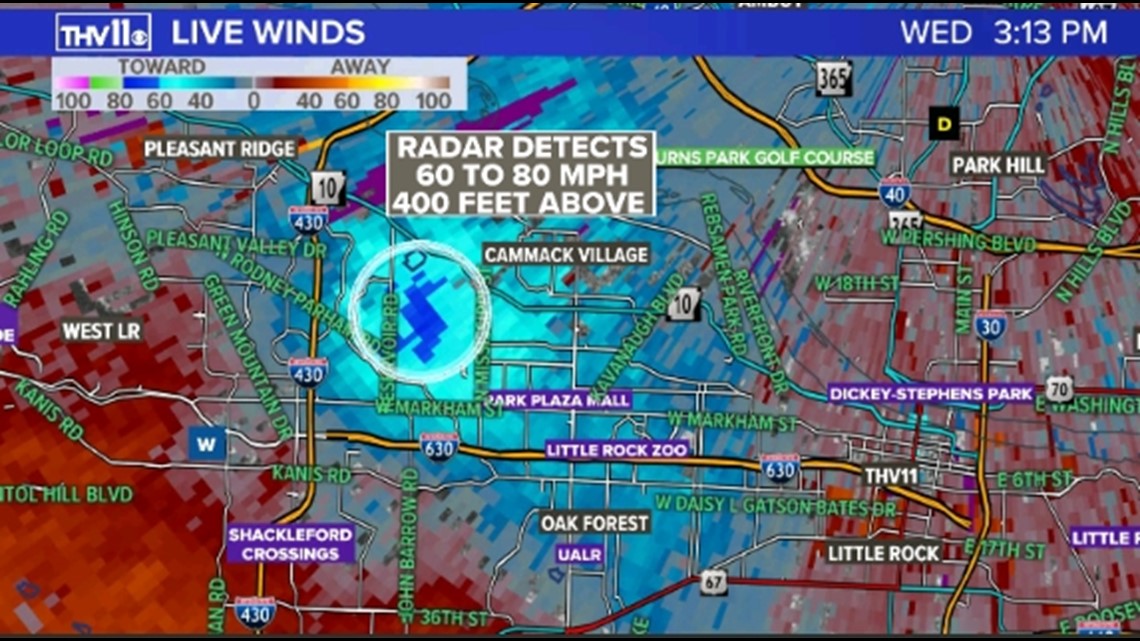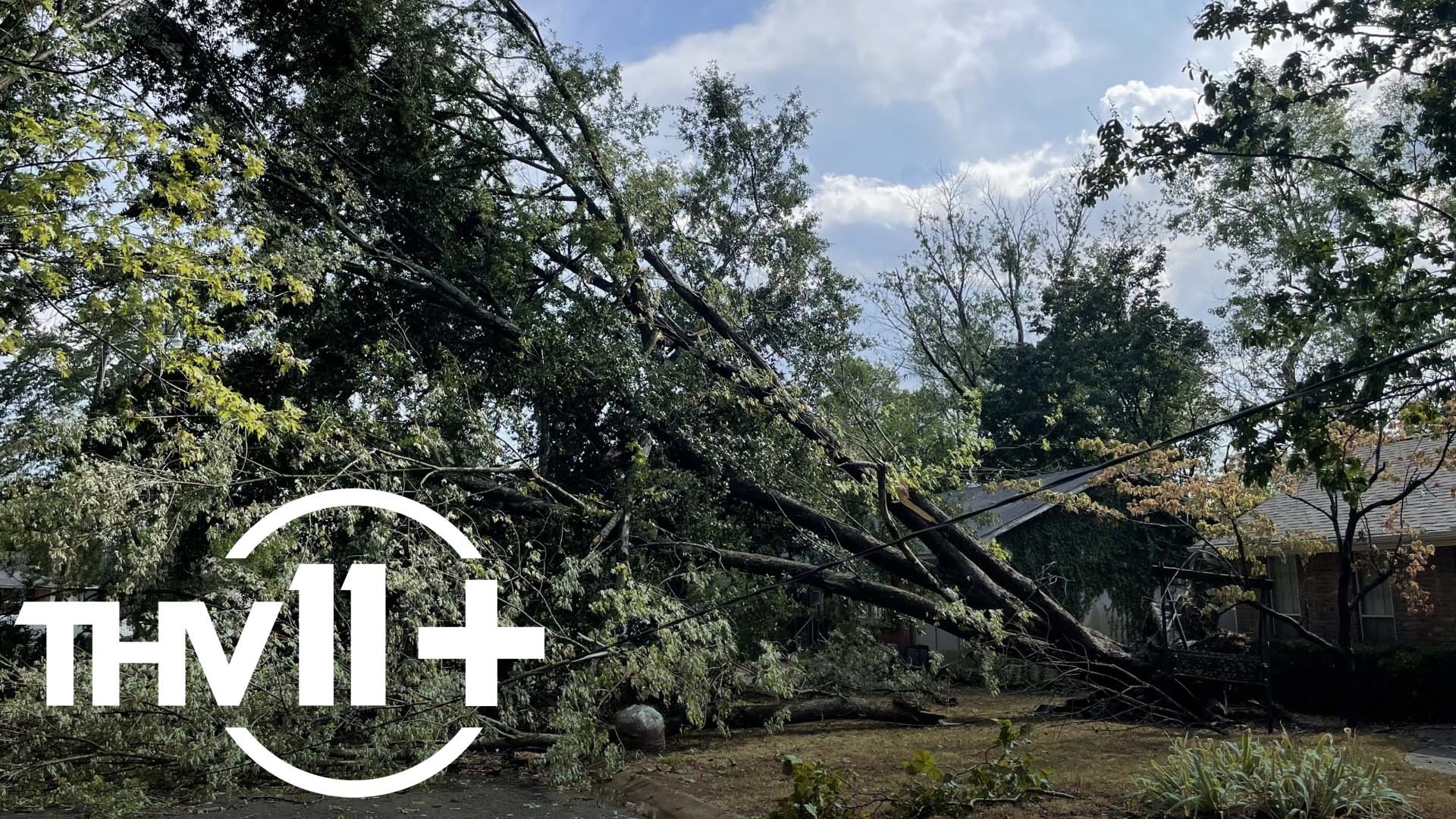LITTLE ROCK, Ark. — On Wednesday, a powerful storm slammed into west Little Rock, producing strong winds, and torrential rain.
After the storm passed, it left behind damage that had residents questioning if a tornado had actually struck— however, that wasn't the case.
These destructive winds were caused by what is known as a "microburst".
When a thunderstorm develops, warm and humid air rises in what is known as the "updraft". You feel this updraft as turbulence when flying through the growing clouds in an airplane.
As the air rises, it will cool and condense into rain, snow, and hail until the cloud can no longer hold the precipitation. Then the precipitation falls and evaporates as it reaches the ground producing typically a nice cooler refreshing breeze. This process is known as the "downdraft."
However, the combination of 102-degree temperatures, lots of humidity, and mid-level dry air on September 6 produced a vigorous downdraft.
The cooler air was so heavy that it crashed down to the surface, like pouring a bucket of water on concrete. The wave of wind spread out in all directions with a force of 60 to 80 mph according to the National Weather Service and radar data.
Meanwhile, just a few miles away to the east a moderate breeze passed through.


This serves as a reminder that a severe thunderstorm can be destructive in some cases and straight-line winds are just as powerful as an EF-0 tornado, which is 65 to 85 mph, according to the Enhanced Fujita scale.
The high winds brought down trees, power lines and damaged homes in the same area that was devastated by the EF-3 tornado back on March 31.

